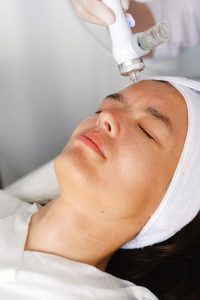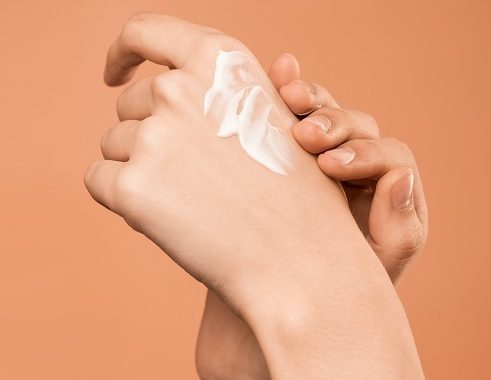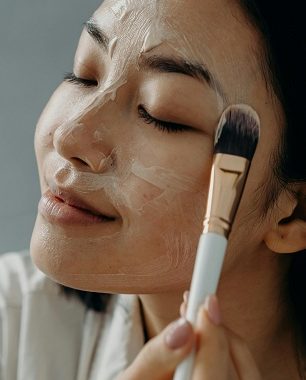
Dermaplaning, a popular cosmetic procedure designed to exfoliate and remove facial hair, has gained considerable attention in recent years. While many individuals experience positive results, some find themselves dealing with dermaplaning regret. In this article, we delve into the world of dermaplaning, exploring the reasons behind regret, potential treatments, and strategies to prevent unwanted side effects.
Understanding Dermaplaning
Dermaplaning is a non-invasive cosmetic procedure that has gained popularity for its ability to rejuvenate the skin and address various skincare concerns. This technique employs a sterile surgical scalpel, wielded by a trained professional, to delicately scrape away the top layer of dead skin cells and vellus hair, more commonly known as peach fuzz. The procedure is meticulously performed, with the objective of achieving several aesthetic benefits.
The primary goal of dermaplaning is to promote smoother skin texture. By removing the outermost layer of dead skin cells, the procedure unveils a fresh, vibrant complexion beneath. This exfoliation process contributes to the reduction of fine lines, wrinkles, and other textural irregularities, fostering a smoother and more even skin surface.
Beyond the immediate textural improvements, dermaplaning is renowned for its ability to enhance the absorption of skincare products. By eliminating the barrier of dead skin cells and fine facial hair, the active ingredients in serums, moisturizers, and other skincare formulations can penetrate the skin more effectively. This heightened penetration allows for increased efficacy of these products, maximizing their potential benefits.
The removal of vellus hair during dermaplaning is a distinct aspect of the procedure. While the hair on the face is often referred to as “peach fuzz,” its removal through dermaplaning can contribute to a more radiant complexion. The absence of this fine facial hair can result in a smoother canvas for makeup application, as well as a subtle luminosity that reflects light more evenly.
The allure of dermaplaning lies in its promise of a flawless finish. Many individuals, captivated by the prospect of achieving refined and radiant skin, incorporate dermaplaning into their regular skincare routines. The popularity of this procedure is further fueled by its non-invasive nature, quick recovery time, and the immediate, visible improvements it offers.
In conclusion, dermaplaning stands as a cosmetic procedure that combines exfoliation, hair removal, and enhanced product absorption to deliver a multifaceted approach to skin rejuvenation. While it has garnered a dedicated following for its transformative effects, individuals considering dermaplaning should approach the procedure with realistic expectations and a thorough understanding of its benefits and potential drawbacks.
Dermaplaning Before and After: Managing Expectations
Embarking on the dermaplaning journey necessitates a nuanced understanding of the before-and-after dynamics, where the outcome can differ significantly from person to person. Managing expectations is paramount as individuals contemplate the procedure, as dermaplaning is not a one-size-fits-all solution, and results can be influenced by various factors.
Before undergoing dermaplaning, it is essential to recognize that individual skin types, conditions, and responses to the procedure can contribute to diverse outcomes. While a considerable number of individuals revel in the post-dermaplaning glow, experiencing smoother skin and optimized product absorption, it is equally crucial to acknowledge the potential for unexpected challenges that may lead to dermaplaning regret.
The benefits of dermaplaning, such as the removal of dead skin cells and fine facial hair, often result in an immediate improvement in skin texture and tone. However, the extent of these improvements can vary. Some individuals may witness a remarkable transformation, achieving the desired flawless finish, while others may experience more subtle changes.
Managing expectations also involves recognizing the potential side effects of dermaplaning. Skin irritation and redness are common reactions, particularly in the immediate aftermath of the procedure. These effects are typically temporary and subside within a few hours to a day, but their presence highlights the importance of post-dermaplaning skincare to soothe and nourish the treated skin.
One of the most significant concerns contributing to dermaplaning regret is unexpected hair regrowth. While the procedure is effective in removing fine vellus hair, the regrowth phase may initially appear more noticeable to some individuals, leading to concerns and disappointment. It is crucial to understand that this regrowth does not alter the texture or color of the hair; rather, it becomes more noticeable due to the contrast with the freshly dermaplaned skin.
To manage expectations effectively, individuals considering dermaplaning should engage in open and transparent communication with their skincare professionals. A thorough consultation can provide insights into the potential outcomes based on individual skin characteristics and conditions. Additionally, reviewing before-and-after photos of individuals with similar skin types can offer a realistic portrayal of what to expect.
In conclusion, while dermaplaning can offer remarkable benefits for skin texture and appearance, the diverse nature of individual responses necessitates a realistic and informed approach. Managing expectations involves understanding the potential for both positive transformations and temporary side effects, empowering individuals to make well-informed decisions about whether dermaplaning aligns with their skincare goals.
Dermaplaning Regret on Mumsnet: Community Insights
The digital landscape has transformed the way individuals share their experiences and seek advice, and Mumsnet has become a noteworthy platform where users candidly discuss a myriad of topics, including their encounters with dermaplaning. Within this online community, individuals open up about their personal journeys, offering insights into both the positive and challenging aspects of dermaplaning, forming a mosaic of experiences that can significantly impact decision-making for others.
Users on Mumsnet engage in conversations about dermaplaning regret, raising concerns that resonate with those who have undergone the procedure. One prevalent theme revolves around unexpected hair regrowth, where individuals express disappointment or frustration with the visibility of regrown hair after the treatment. This nuanced discussion sheds light on the need for a realistic understanding of the post-dermaplaning regrowth phase, emphasizing the importance of setting accurate expectations before undergoing the procedure.
Stubble becomes another focal point in these community discussions, with users sharing their concerns about the presence of stubble after dermaplaning. This aspect of the conversation underscores the potential for varied outcomes, as some individuals may experience more noticeable regrowth or stubble than others. The discussions on Mumsnet serve as a valuable resource for those contemplating dermaplaning, offering a glimpse into the diversity of results and potential challenges.
Dissatisfaction with dermaplaning results is another dimension explored in these community conversations. Users articulate their feelings of regret, citing reasons such as unmet expectations or unexpected side effects. These candid narratives highlight the necessity of thorough research, realistic goal-setting, and communication with skincare professionals to mitigate the risk of dissatisfaction and regret.
The insights shared on Mumsnet underscore the multifaceted nature of dermaplaning outcomes, emphasizing that while many individuals benefit from the procedure, others may encounter challenges that lead to regret. This collective wisdom serves as a valuable resource for individuals considering dermaplaning, allowing them to make more informed decisions about whether the procedure aligns with their expectations and skincare goals.
In conclusion, Mumsnet and similar online communities provide a unique space for individuals to openly discuss their experiences with dermaplaning, shedding light on both the positive and regretful aspects of the procedure. These insights offer a nuanced perspective on the varied outcomes of dermaplaning, empowering individuals to approach the decision-making process with a heightened awareness of potential challenges and a realistic understanding of what the procedure entails.
Dermaplaning Stubble: Addressing Common Concerns
A significant source of dermaplaning regret often stems from apprehensions about unwanted hair regrowth and the dreaded presence of stubble. It is crucial to address these concerns head-on, dispelling common myths and providing a comprehensive understanding of what individuals can realistically expect in terms of post-dermaplaning hair regrowth.
Contrary to popular belief, dermaplaning does not fundamentally alter the texture or color of the hair on the face. The vellus hair, commonly referred to as peach fuzz, is fine, light, and barely noticeable both before and after the procedure. This is a key distinction from other hair removal methods that may affect the coarseness or color of regrown hair. Dermaplaning specifically targets the superficial layer of dead skin cells and vellus hair, leaving the underlying structures intact.
However, the initial phase of hair regrowth following dermaplaning may create the illusion of increased visibility for some individuals. This can be attributed to factors such as the contrast between the freshly dermaplaned skin and the regrowing hair, causing the hair to appear more noticeable than it was before the procedure. It’s crucial for individuals to understand that this is a temporary phenomenon and does not signify a permanent change in the nature of the regrown hair.
Addressing concerns about stubble is essential for managing dermaplaning regret. Stubble, in the traditional sense of coarse and prickly regrowth, is not a typical outcome of dermaplaning. Instead, the regrown vellus hair maintains its fine and soft characteristics. However, the heightened contrast between the regrown hair and the smooth skin surface can create the perception of stubble, leading to concerns and regrets.
To manage these concerns effectively, individuals considering or recovering from dermaplaning should be informed about the natural regrowth process and the temporary nature of any increased visibility. Emphasizing the fact that the regrown hair remains consistent in texture and color can help alleviate fears related to unwanted changes.
Moreover, it’s essential for skincare professionals to communicate openly with their clients about potential post-dermaplaning experiences, addressing concerns proactively and providing realistic expectations. A comprehensive pre-procedure consultation can play a pivotal role in ensuring that individuals are well-prepared for the transient phase of regrowth and are less likely to experience regret.
In conclusion, understanding the nuances of dermaplaning regrowth is crucial for managing concerns about stubble and preventing unnecessary regret. By dispelling myths and providing accurate information, individuals can make informed decisions about dermaplaning, appreciating its benefits while navigating the temporary phases of regrowth with confidence.
Dermaplaning Regret Treatment Options
Experiencing regret after dermaplaning can be disheartening, but there are several targeted treatment options available to address specific concerns and enhance overall skin satisfaction. These options aim to mitigate issues such as irritation, redness, and unwanted hair regrowth, providing individuals with a pathway to regain confidence in their skin’s appearance.
-
Moisturization and Skincare:
- Key Role of Moisturization: Keeping the skin well-moisturized is a fundamental step in mitigating the aftermath of dermaplaning. Hydrated skin is more resilient and less prone to irritation. Opting for a soothing, fragrance-free moisturizer can help alleviate dryness and promote a healthy skin barrier.
- Gentle Skincare Products: Utilizing skincare products with mild formulations is crucial in the post-dermaplaning phase. Gentle cleansers, hypoallergenic moisturizers, and fragrance-free serums can contribute to healing the skin, reducing redness, and minimizing the appearance of any unwanted effects.
-
Consultation with a Dermatologist:
- Personalized Advice: Dermatologists play a pivotal role in offering personalized advice based on individual skin types and concerns. A consultation with a dermatologist allows for a thorough assessment of the skin’s condition post-dermaplaning and enables the development of a tailored treatment plan.
- Prescription Medications: Dermatologists may recommend prescription medications or topical treatments to address specific issues such as persistent redness or irritation. These targeted interventions can accelerate the healing process and enhance the overall outcome.
-
Laser Hair Removal:
- Targeting Persistent Hair Regrowth: In cases where individuals are troubled by persistent hair regrowth post-dermaplaning, laser hair removal emerges as a viable and effective option. This procedure targets the hair follicles beneath the skin’s surface, inhibiting regrowth and providing a longer-lasting solution.
- Professional Expertise: Laser hair removal should be performed by trained professionals to ensure safety and efficacy. A series of sessions may be required to achieve optimal results, and individuals should be aware of potential side effects and recovery periods associated with the procedure.
It’s essential to note that the effectiveness of these treatments may vary based on individual skin characteristics and the specific nature of the concerns. Therefore, a comprehensive approach, potentially combining multiple treatment modalities, may be recommended to address various aspects of dermaplaning regret.
In conclusion, individuals experiencing dermaplaning regret have viable treatment options at their disposal. From nurturing the skin with moisturization and gentle skincare to seeking professional guidance from dermatologists and exploring laser hair removal for persistent regrowth, these solutions empower individuals to navigate and overcome the challenges associated with post-dermaplaning concerns, ultimately promoting skin satisfaction and confidence.
How to stop dermaplaning regret
As with any cosmetic procedure, preventing dermaplaning regret involves careful consideration, thorough research, and strategic decision-making. By adopting the following tips, individuals can navigate the dermaplaning landscape more confidently, minimizing the risk of unexpected outcomes and maximizing the likelihood of a positive experience.
-
Research and Consultation:
- In-Depth Understanding: Thoroughly researching dermaplaning is the first step in preventing regret. Understanding the procedure, its benefits, and potential side effects is crucial for informed decision-making. Reliable sources, including medical journals and reputable skincare websites, can provide valuable insights into what to expect.
- Qualified Skincare Professional: Consultation with a qualified skincare professional is indispensable. Skincare professionals can assess individual skin types, discuss expectations, and provide personalized advice on whether dermaplaning is suitable. Open communication during the consultation is key, allowing individuals to express concerns and receive realistic guidance.
-
At-Home Dermaplaning:
- Alternative for the Cautious: For those hesitant about professional dermaplaning, at-home dermaplaning tools offer an alternative. However, it’s crucial to approach at-home procedures with caution. Following instructions meticulously is essential to minimize the risk of adverse effects. Users should be aware of the limitations and potential risks associated with DIY dermaplaning and, when in doubt, seek professional guidance.
-
Regular Maintenance:
- Realistic Expectations: Understanding that dermaplaning is not a one-time, permanent solution is vital. Individuals should acknowledge that the benefits of the procedure may require regular maintenance sessions to sustain the desired results. This awareness helps manage expectations and ensures that individuals are prepared for the ongoing commitment associated with maintaining the effects of dermaplaning.
- Follow-up Consultations: Regular check-ins with skincare professionals can be beneficial. These follow-up consultations allow professionals to assess the skin’s response to dermaplaning over time, make any necessary adjustments to the skincare routine, and address emerging concerns. This proactive approach contributes to long-term satisfaction and minimizes the likelihood of regret.
By integrating these preventive measures into the decision-making process, individuals can approach dermaplaning with a realistic understanding of the procedure’s nuances and potential outcomes. Whether opting for professional dermaplaning or considering at-home tools, informed decision-making empowers individuals to make choices aligned with their skincare goals, minimizing the risk of dermaplaning regret and promoting a positive overall experience.
Conclusion
Dermaplaning can be a transformative skincare procedure, but it is essential to approach it with realistic expectations. By understanding the potential for dermaplaning regret and taking preventive measures, individuals can make informed decisions about whether the procedure is right for them. For those experiencing regret, seeking professional advice and exploring treatment options can pave the way to a more satisfactory outcome.
Further Reading:
Dermaplaning Regrets: Is It Safe For Your Skin?
I’m a makeup artist – dermaplaning remove your skin
Hair Removal – Regrets Dermaplaning
Â
FAQs:
Are there negatives to dermaplaning?
While dermaplaning offers smoother skin and enhanced product absorption, potential negatives include irritation, redness, and the temporary visibility of fine hair regrowth. Some individuals on platforms like Mumsnet express concerns about unexpected stubble and dissatisfaction with results. Proper aftercare, consultation with skincare professionals, and realistic expectations can mitigate these issues, ensuring a more positive dermaplaning experience.
Can dermaplaning be done wrong?
Yes, dermaplaning can be done incorrectly, leading to potential issues such as irritation, cuts, or uneven results. Inexperienced practitioners or improper technique may contribute to adverse effects. It’s crucial to seek qualified skincare professionals, follow proper protocols, and communicate openly during the procedure to minimize the risk of complications and ensure a safe and effective dermaplaning experience.
Does hair grow back weird after dermaplaning?
Hair doesn’t grow back weird after dermaplaning; however, regrowth may initially appear more noticeable due to the contrast with smooth skin. The texture and color of the regrown hair remain the same—fine and light. Understanding this temporary phase and managing expectations can help individuals navigate post-dermaplaning regrowth with confidence.
Why does my face look bad after dermaplaning?
Temporary redness, irritation, or an initial appearance of increased hair regrowth might make your face look less optimal immediately after dermaplaning. These effects are usually transient, and the skin requires time to recover. Adequate post-dermaplaning care, including moisturization and gentle skincare, can alleviate these concerns, promoting a smoother and healthier complexion over time.
Will i regret dermaplaning?
While many individuals benefit from dermaplaning, potential regrets may arise due to factors like temporary redness, irritation, or unexpected hair regrowth. Researching the procedure, managing expectations, and consulting with skincare professionals can mitigate risks and increase satisfaction. Ultimately, individual experiences vary, and informed decision-making is crucial to minimize the likelihood of regret.
Is dermaplaning bad?
Dermaplaning is generally considered safe and effective for exfoliation and hair removal. However, risks may include temporary redness, irritation, or the perception of increased hair regrowth. Choosing qualified professionals, following proper protocols, and understanding potential side effects can help ensure a positive dermaplaning experience.
Are there discussions about dermaplaning regret on Reddit?
Yes, Reddit hosts various discussions on dermaplaning regret where users share experiences, concerns about unexpected hair regrowth, and dissatisfaction with results. These threads offer a platform for individuals to seek advice, share insights, and emphasize the importance of thorough research and informed decision-making before undergoing dermaplaning.
Can dermaplaning lead to regret regarding the appearance of the face?
Dermaplaning may result in regret for some individuals due to factors such as temporary redness, irritation, or the initial visibility of fine hair regrowth. Understanding that these effects are typically temporary and managing expectations through proper consultation can help individuals navigate potential concerns about the immediate appearance of the face after dermaplaning.
Does dermaplaning lead to regret related to hair regrowth?
Some individuals experience regret with dermaplaning due to concerns about the temporary visibility of regrown hair. Despite the initial perception, the regrown hair maintains its original texture and color—fine and light. To minimize regrets, it’s crucial to understand that this phase is transient, manage expectations, and consider options like moisturization, skincare, or, in persistent cases, laser hair removal for a longer-lasting solution.
Can face shaving through dermaplaning lead to regret?
Face shaving via dermaplaning might cause regret for some individuals due to potential side effects such as irritation or the temporary visibility of fine hair regrowth. Despite similarities to traditional shaving, dermaplaning focuses on exfoliation and is generally safe when performed by a qualified professional. To minimize regrets, thorough research, consultation with skincare experts, and realistic expectations are essential before opting for this procedure.
Are there dermaplaning regrowth pictures available online?
Yes, online platforms like forums, blogs, and skincare websites may feature dermaplaning regrowth pictures. These images showcase the temporary phase where regrown hair may appear more noticeable before reverting to its original fine and light state. Reviewing these pictures can help individuals manage expectations, understand the natural regrowth process, and make informed decisions about dermaplaning.
Can one find dermaplaning regret pictures online?
Yes, online platforms may host dermaplaning regret pictures, where individuals share experiences and concerns about outcomes. These images highlight aspects like temporary redness, irritation, or unexpected hair regrowth, contributing to a more comprehensive understanding of potential post-dermaplaning challenges. Reviewing such pictures can be informative, but it’s crucial to interpret them contextually and consider varied experiences before making decisions about dermaplaning.


